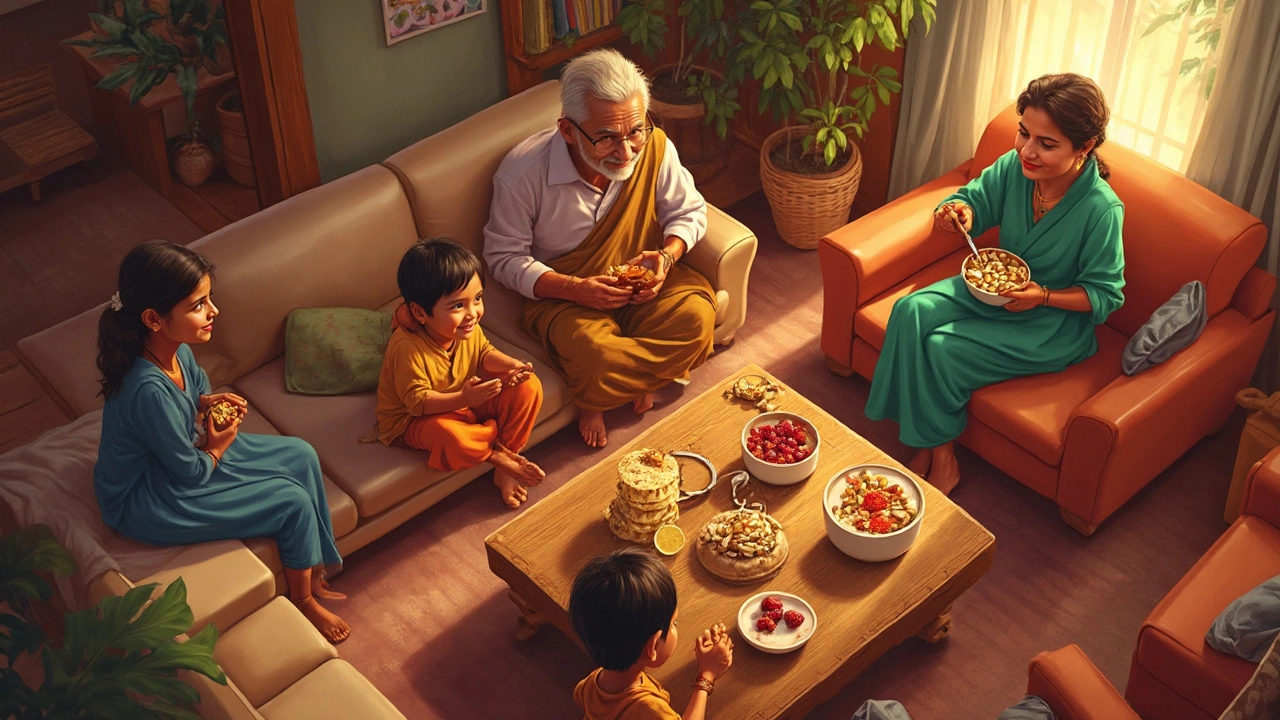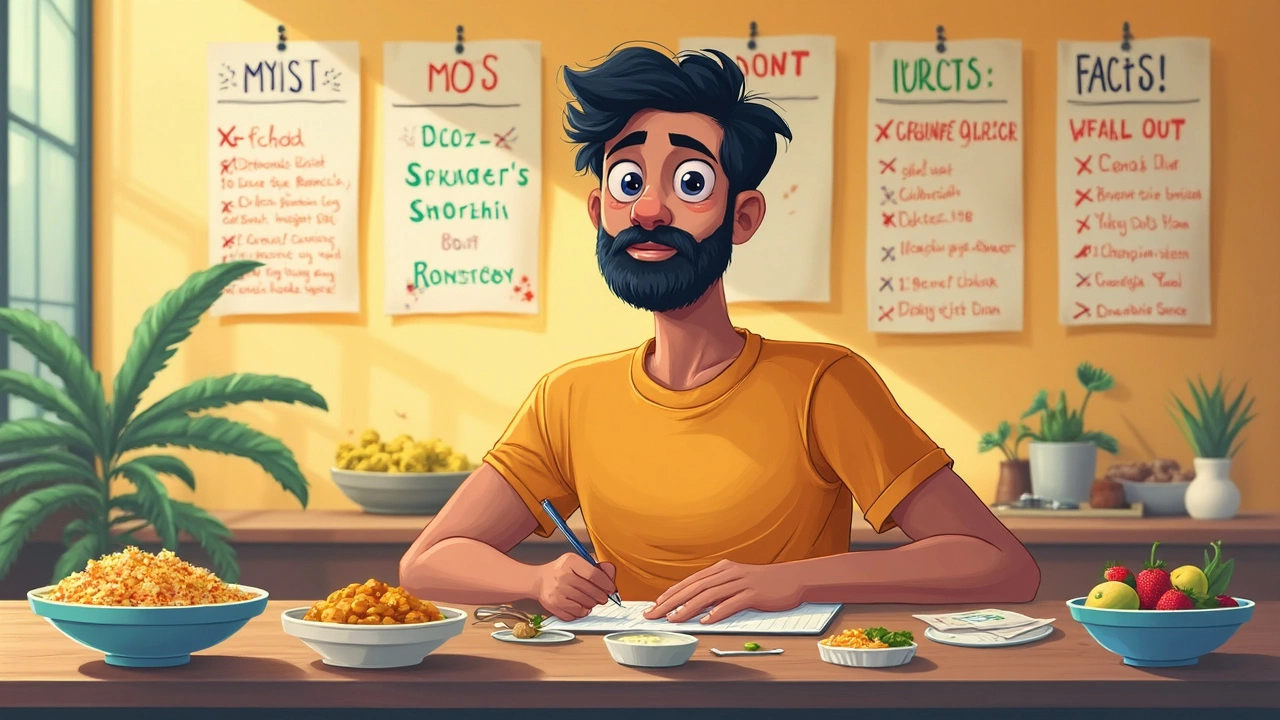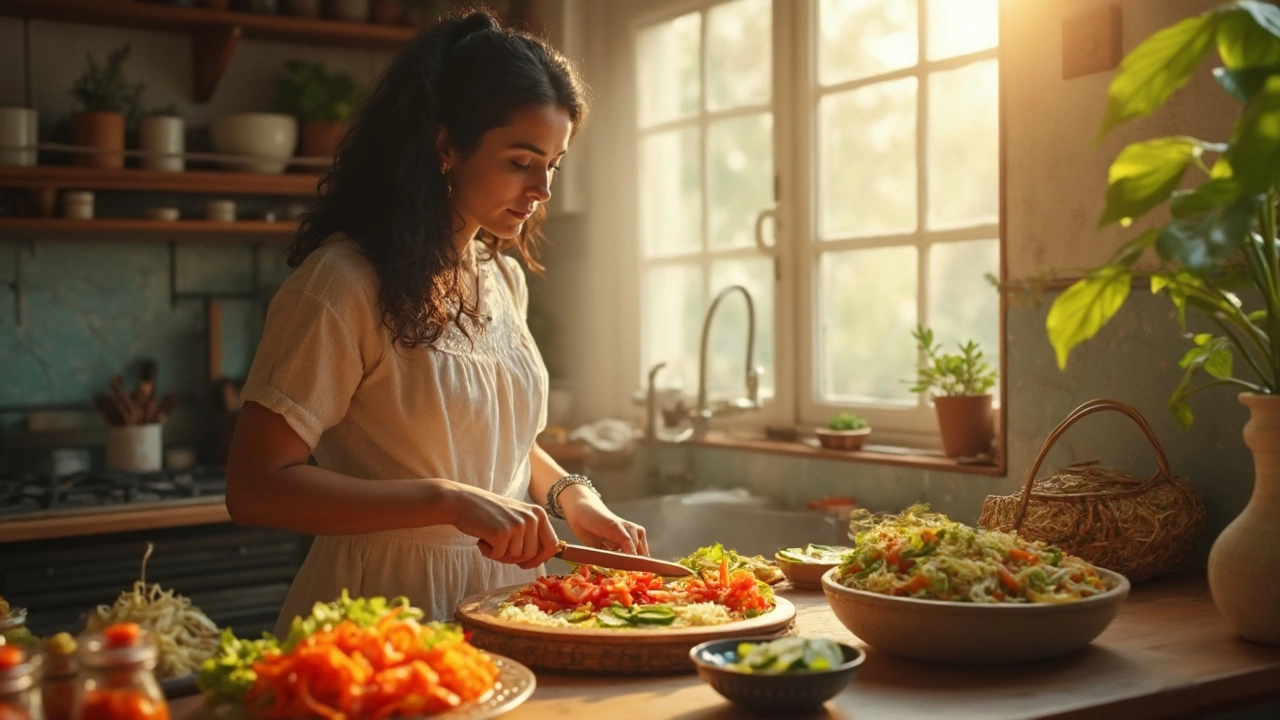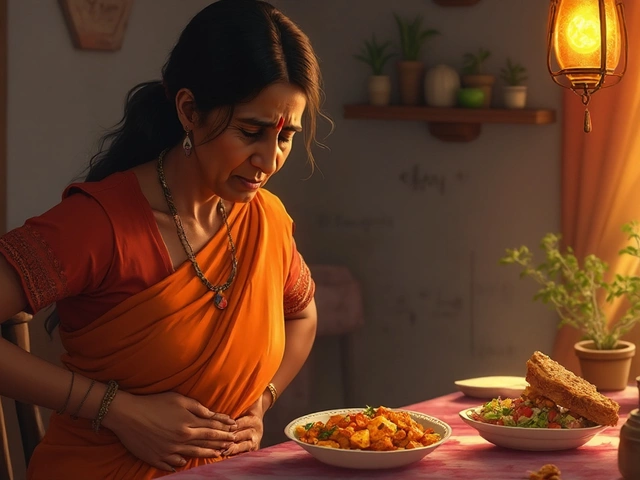You’re probably wondering if it’s even realistic to lose 20 lbs in just two weeks. The internet is full of promises, but let’s cut through the noise. While some folks might see major drops on the scale in that time—especially when cutting carbs or doing extreme fasts—most of what you’ll lose quickly is water, not fat. If you’re aiming for real, lasting change (and not just a number on the scale), healthy eating habits matter a lot more than starving yourself.
Now, Indian snacks have a bad rap for being loaded with oil and sugar, but there are smart ways to keep the flavors you love without all those extra calories. It’s all about swapping out the fried and processed stuff for roasted, baked, or steamed options. Think chana chaat without the sev, roasted makhana instead of chips, or homemade sprouts salad instead of samosas from the store. These snacks actually keep you full, give you steady energy, and crush those midday cravings.
Don’t overlook how powerful it is to prep healthy snacks in advance. If your kitchen is already stocked with roasted peanuts, spiced sprouts, or cut veggies with a tangy chutney, you’ll reach for those instead of grabbing a sugary biscuit. Small changes like this have a real impact, and over time, they make weight loss way less painful.
- Is it Really Possible to Lose 20 lbs in Two Weeks?
- The Problem With Crash Diets
- Smart Swaps: Indian Snacks That Won't Ruin Your Diet
- Prepping Your Snacks: Tips and Hacks
- Staying Real: Healthier Ways to Track Progress
Is it Really Possible to Lose 20 lbs in Two Weeks?
This is a huge question—and yeah, people search for this all the time. The truth? Dropping 20 pounds in two weeks is super rare, and for most people, just not realistic if you’re talking about actual fat, not water weight. What you lose fast is mostly from water, glycogen, and sometimes muscle. Fat loss happens much slower. Most doctors say a safe target is about 1-2 pounds per week. That’s way less than what these crash-diet headlines promise.
Let’s break it down. For one pound of fat to disappear, your body needs a calorie deficit of about 3,500 calories. So, to lose 20 pounds, you’d need a deficit of 70,000 calories in two weeks. That’s 5,000 calories per day. To put it straight, even extreme diets and marathon-style workouts don’t burn this much—without some nasty side effects like dehydration, weakness, and even starving your muscles.
This doesn't mean you can’t make a big shift in how you look and feel in two weeks. Cutting out salty, sugary, and carb-heavy foods (plus those fizzy drinks) makes you lose water fast, so you do look slimmer. Some wrestlers and athletes use these tricks temporarily—but they’re not really losing fat. If you combine strict eating with exercise and focus on lose 20 lbs as a boost to motivate a long-term plan, you’ll build good habits and drop a chunk of weight. But expecting pure fat loss in that timeframe? That’s just not how the body works.
- Rapid drops on the scale usually mean water loss, not fat burn.
- Major calorie cuts can slow down your metabolism, making future weight loss tougher.
- Research from big clinics like the Mayo Clinic and NHS says slow and steady wins when it comes to lasting weight changes.
If you’re tempted by a quick-fix diet, remember—if it sounds wild or too easy, it probably is. Short bursts can kickstart you, but healthy changes stick around much longer. So, focus on progress over perfection. You’ll get better, safer results by tossing out the crash diet mindset and making swaps you can live with.
The Problem With Crash Diets
It’s tempting to believe you can lose 20 lbs just by slashing calories and skipping meals for a few weeks. Crash diets sound like a magic fix, but they come with baggage that most folks don’t know about—or just ignore.
When you cut your calories super low, your body reacts by slowing down your metabolism. It thinks you're starving. So, even if you eat less, your body burns fewer calories just to keep you alive. This can leave you feeling tired, cranky, and weirdly obsessed with food. Plus, when the crash diet stops, most people gain the weight right back, sometimes even faster than before.
Here’s a quick look at what really happens during a crash diet, according to research:
| Short Term Effects | Long Term Effects |
|---|---|
| Rapid water weight loss Burst of initial motivation Possible nausea & headaches | Slowed metabolism Muscle loss Binge eating & weight regain |
Ever wondered why you lose a ton of weight fast and then hit a wall? It’s because fat loss is slow, but water and muscle drop first on these diets. Studies from medical centers like Mayo Clinic say most crash dieters regain the weight within a year. Some even end up heavier because their metabolism tanks and cravings go through the roof.
The worst part? Crash dieting messes with your relationship with food. You start to see eating as punishment or reward, not as fuel. Instead of quick fixes, steady, healthy eating—especially with smart snacks—gives much better results for keeping weight off long term. If you want energy, mood, and actual fat loss, avoid the crash and stick with balanced foods. Your body will thank you.
- Aim for a small calorie deficit—never starvation.
- Focus on protein and fiber for snacks to feel full.
- Remember, losing 1-2 lbs a week is what most experts call both safe and sustainable.

Smart Swaps: Indian Snacks That Won't Ruin Your Diet
Snacking is usually where good intentions go off track. A pack of namkeen or a couple of samosas can send your calorie count through the roof. But swapping out those heavy snacks for lighter, protein-packed ones makes a real difference. Here are a few easy swaps that you can start using right away:
- Roasted chana instead of fried bhujia — crunchy, salty, and just as satisfying but with way less fat.
- Makhana (fox nuts), roasted with basic spices, instead of potato chips. Makhana has far fewer calories per serving and actually keeps you full.
- Sprouts salad with chopped onions, tomatoes, lemon, and a little salt — loads you up on protein and fiber with almost zero extra oil or sugar.
- Idli (steam-cooked) with green chutney instead of pakoras. Idlis are filling and don’t come with sneaky added fats.
- Dhokla, if you stick to a small serving, is light, high in protein, and much safer for your waistline than deep-fried snacks.
- Fruit chaat (skip the chaat masala with extra salt) is a sweet fix without processed sugars.
If you want some numbers, here’s what swapping looks like in practice. The table below compares common Indian snacks and their healthier alternatives. You might be surprised just how much you can save on calories with simple shifts.
| Snack | Serving Size | Calories | Protein (g) | Fiber (g) |
|---|---|---|---|---|
| Fried Samosa | 1 piece (50g) | 130 | 2 | 1 |
| Roasted Chana | 30g | 110 | 6 | 6 |
| Potato Chips | 30g | 160 | 2 | 1 |
| Roasted Makhana | 30g | 90 | 3 | 3 |
| Namkeen Mixture | 30g | 150 | 2 | 1 |
| Sprouts Salad | 1 cup (100g) | 80 | 7 | 5 |
Notice how the healthy Indian snacks come with more fiber and protein for fewer calories? This combo will keep you feeling full longer, which makes it way easier to stick to your goals. Plus, these snacks don’t make your energy crash after an hour.
Last tip: prep a few days' worth of snacks and keep them in airtight containers. No excuses when hunger strikes. And never trust your willpower when fresh pakoras are sitting at arm’s reach—choose smarter snacks.
Prepping Your Snacks: Tips and Hacks
If you want to eat healthy Indian snacks and actually lose weight, prepping ahead is a game changer. You save time, dodge bad choices, and it actually keeps the stress low if you’ve got go-to options ready when cravings hit.
Try these steps to keep your healthy snack goals on track:
- Batch cook roasted chana and makhana (fox nuts): Just toss them with a little olive oil, black salt, and chili powder. Bake till crispy. They’ll last for days in an airtight jar and are seriously filling compared to fried namkeen or chips.
- Boil a bunch of chickpeas or green gram on Sunday. Store them in individual containers. Throw in onions, tomatoes, lemon juice, and a pinch of chaat masala for a quick salad whenever hunger strikes.
- Slice carrots, cucumbers, and bell peppers at the start of the week. Pair with homemade coriander-mint chutney. Store the veggies in water so they stay crisp for up to five days.
- Portion unsalted peanuts or almonds into small containers (around 20-25g per serving). It’s way too easy to overeat from the bag, so single servings help.
- Keep Greek yogurt or plain dahi in the fridge. Top with chopped fruits, or even a sprinkle of roasted cumin. That’s your sweet craving fix, minus all the sugar.
If you’re thinking about calories, here’s a handy table with some of the most popular healthy Indian snacks. These numbers can help you plan how they fit into your day:
| Snack | Serving Size | Calories (approx.) | Protein (g) |
|---|---|---|---|
| Roasted Chana | 30g | 120 | 6 |
| Makhana (Roasted) | 25g | 90 | 3 |
| Sprouts Salad | 1 cup | 80 | 8 |
| Plain Dahi (Curd) | 100g | 60 | 4 |
| Carrot & Cucumber Sticks | 1 cup | 35 | 1 |
One more quick tip: keep your snacks visible and easy to grab. If the fruit bowl or your prepped boxes are at the front of the fridge, you’re way more likely to choose them over packaged stuff hiding in the pantry. And always know your portions—that’s where people usually slip up, even with the healthiest snacks.
Sticking to these habits makes it way more realistic to lose 20 lbs (or any amount, really), while still getting your crunch fix the Indian way. Prep smart, snack smarter.

Staying Real: Healthier Ways to Track Progress
Chasing quick results—like trying to lose 20 lbs in two weeks—can make you obsessed with the scale, but numbers alone don’t tell the whole story. Here’s the thing: weight can swing wildly because of water retention, hormones, or even just eating a salty meal.
It’s better to use other progress markers. Take weekly photos, so you can spot real changes in how your clothes fit, not just the number flashing back at you. Tape measures are actually really handy for tracking inches lost from your waist, hips, and arms. You might notice your pants feel looser even when your weight isn’t budging much.
Apps like MyFitnessPal or Google Fit help you see patterns, showing how your food and habits line up with your progress. Set reminders to drink water, walk after meals, and log your smart snack choices. If you want something even simpler, jot down your meals and snacks on paper—sometimes, just seeing your choices in writing is enough to nudge you in the right direction!
- Weigh yourself only once a week, first thing in the morning.
- Track your energy levels and mood—are you less sluggish after swapping fried snacks for roasted makhana?
- Set mini goals—like preparing snacks for two days in a row, then stretch that to a week.
If you like numbers, here's what’s normal: healthy weight loss is 1-2 pounds per week for most people. Trying to drop a lot more than that might mess with your body and leave you feeling exhausted. Just look at this breakdown:
| Weekly Weight Loss | Calories to Cut Daily | Possible Side Effects |
|---|---|---|
| 1-2 lbs | 500-1000 kcal | Safe, sustainable |
| 5+ lbs | 2500+ kcal | Fatigue, muscle loss, rebound weight |
Remember, fat loss takes time. Snap those progress pics, celebrate fitting into an old T-shirt, or hitting a new snack-prep streak. These signs show you’re on track—even when your bathroom scale acts stubborn.
- Poplular Tags
- lose 20 lbs
- indian snacks
- healthy snacks
- weight loss
- two week diet











